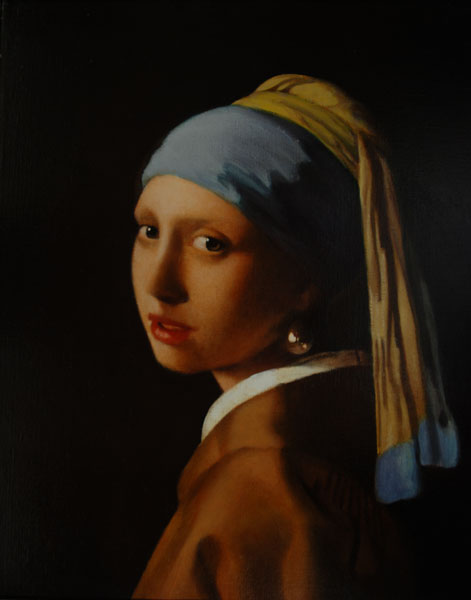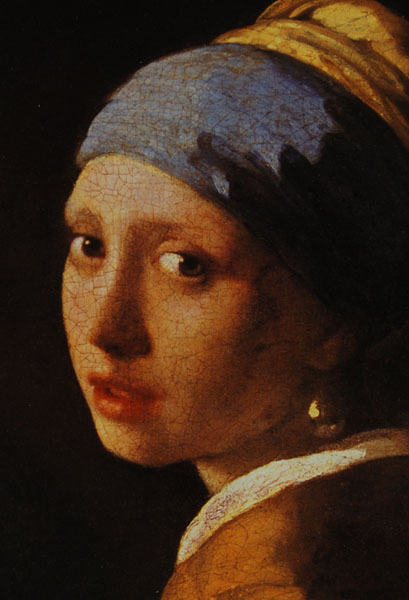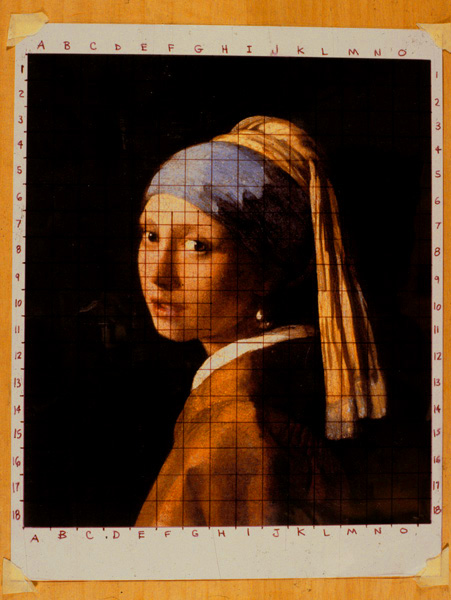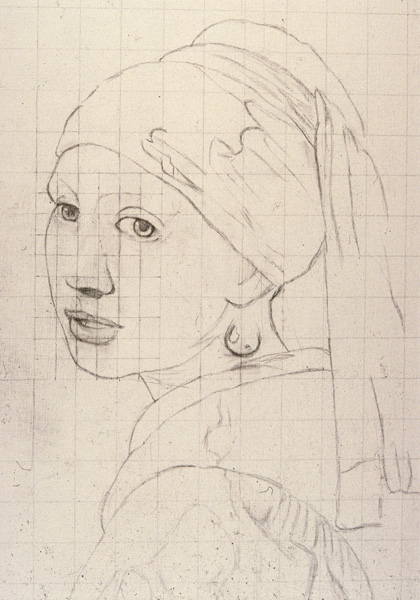
PAGE 1: Painting a Copy of Jan Vermeer's "Girl with a Pearl Earring"
Using Oil Glazing Technique and a Grisaille (Monochromatic Gray) Underpainting


Painting a copy of Jan Vermeer's "Girl with a Pearl Earring" (his original shown to the left) is a challenge primarily because of the subtlety of the girl's expression, which is very difficult, if not impossible to duplicate. Likewise, the original painting has a softly diffuse and ethereal quality to the brushwork that makes the edges of the girl's features hard to precisely define. However, it is these very qualities that have made Vermeer's iconic portrait such a popular subject for oil painters to try to emulate, since many artists and portrait painters would love to have even a small measure of understanding regarding Vermeer's painting technique. Rather than seeking to create a flawless duplicate of Vermeer's original, the aim of this webpage is to give some insights into how glazing mediums and glazed paint layers can be manipulated to model the forms in a painting.

One of the advantages of learning from doing a copy is that you are dealing with a known quantity --You already know what the painting you are copying should look like once it is completed, and you also know that it has elements that you appreciate a great deal, and would like to understand better. To paint a copy, you will need a color photo of the painting of suitable quality that adequately conveys the physical attributes of color and luminousity that drew you to the painting in the first place. Ideally, one would be able to use the actual painting as their reference, but in this case that is of course not an option.
There are numerous techniques for transferring a drawing of the photo to a stretched canvas. You can use a slide projector, an opaque projector, or you can use the method illustrated here -- the use of a grid drawn on the photo, and a corresponding grid of larger squares drawn onto the stretched artist's canvas.

By using the horizontal and vertical lines of the grid to orient your pencil, you can do an accurate outline drawing of the main features of the original painting onto your canvas, by concentrating on drawing one square at a time. Notice that I have added a grid of smaller squares in the facial area, to help increase my accuracy at plotting out the position of the girl's eyes, nose, and mouth. You can use a graphite drawing pencil, or charcoal, conte crayon, etc.